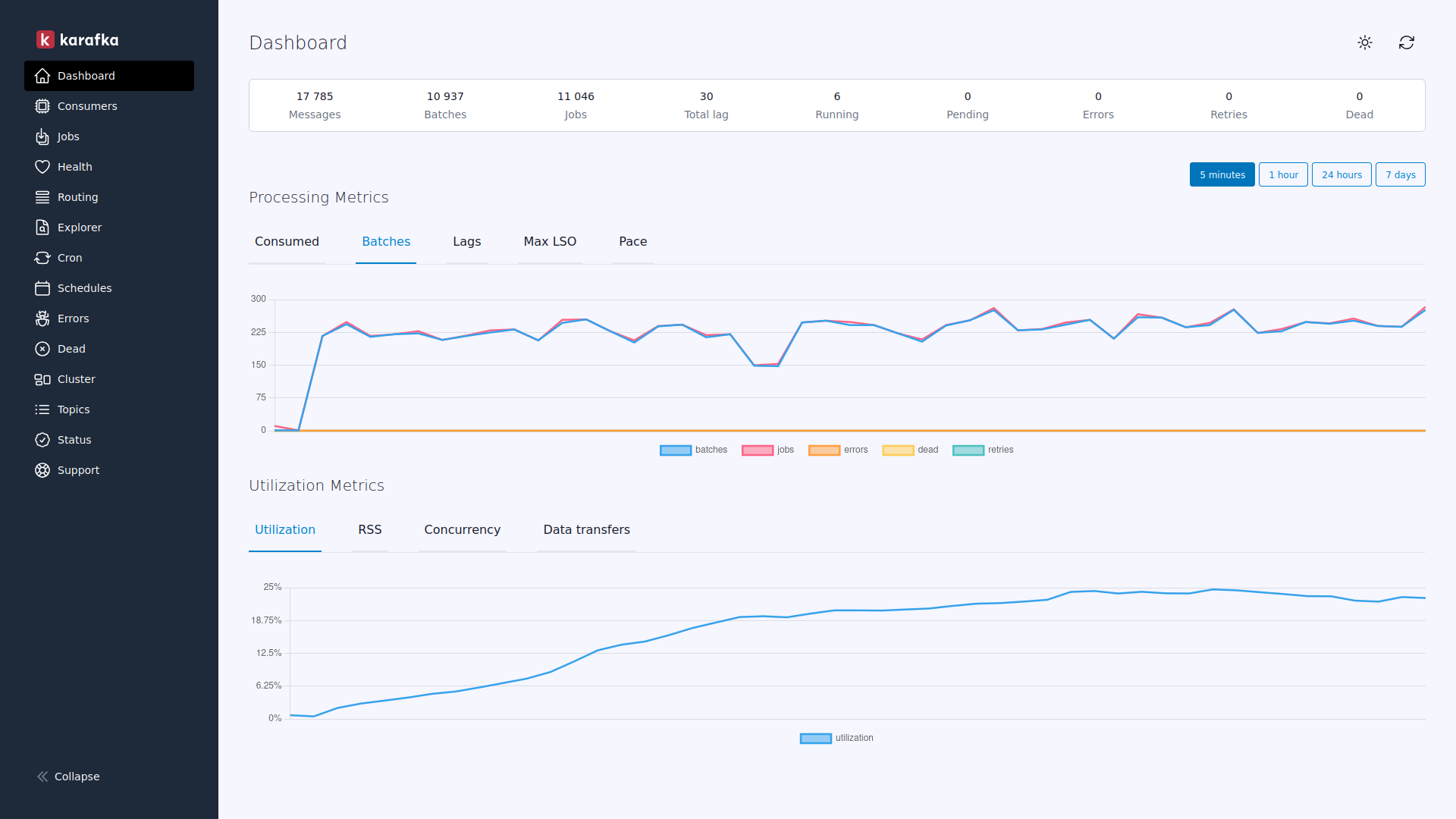| install |
Installs the Karafka Web UI, creates necessary topics, populates initial zero state, and updates the karafka.rb file. Ensures the empty UI is displayed even if no karafka server processes are running. |
karafka-web install [--replication-factor=] |
replication_factor: Optional. Replication factor to use. Defaults to 1 for dev and 2 for prod. |
| migrate |
Creates missing topics and missing zero states. Necessary for each environment where you want to use the Web UI. |
karafka-web migrate [--replication-factor=] |
replication_factor: Optional. Replication factor to use. Defaults to 1 for dev and 2 for prod. |
| reset |
Removes all the Karafka topics and recreates them with the same replication factor. |
karafka-web reset [--replication-factor=] |
replication_factor: Optional. Replication factor to use. Defaults to 1 for dev and 2 for prod. |
| uninstall |
Removes all the Karafka Web topics and cleans up all related configurations and setups. |
karafka-web uninstall |
N/A |

